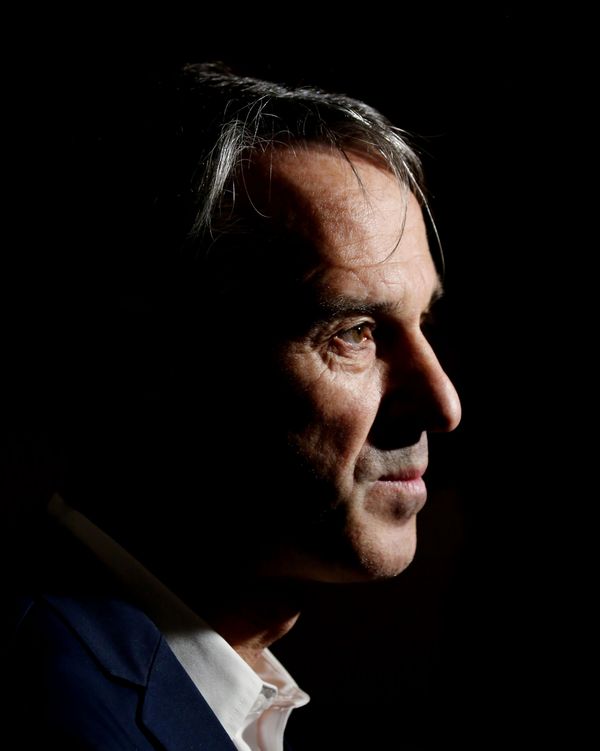
Theater director Ivo van Hove isn’t known for small gestures in his often merciless productions. Blood rains from the ceiling. Wolves stalk across the stage. At 60 years old, van Hove, who is Belgian, has run the largest repertory theater in the Netherlands for 18 years while simultaneously staging hypermodern takes on classic plays, operas, and even novels and films around the world. This December, he’s bringing what he calls “a West Side Story for the 21st century” to Broadway.
Is there something you’re always looking for in a project?
I have a saying that if you were to look at every production again, you could see who I was when I was 20, who I was when I was 35, who I am now when I’m 60 — very personal, and yet it changes also with the world around me. 9/11 had a huge impact on my work in the millennium years. My projects afterward — around 2003, 2004, 2005 — became much more political. I’m never searching for certain material. I never say to my dramaturges, “I’m interested in this thing right now, so try to find me a text.” No. I read the texts all the time — I go to the movies, I read novels. Like A Little Life, for instance, by Hanya Yanagihara, a novel I did in Amsterdam in a stage version — it was a coincidence that it came toward me. People started giving me the book as a present; then I started to read it, and I was totally shocked by it, overwhelmed by it, and I thought, Well, I have to do this now.
Why do you make so much use of technology — cameras, live feeds?
At the birth of a production, there is not only me but also Jan Versweyveld, my scenographer. He always does the sets and the lights, but he is much more than that. When I have an idea about what to do, he is the first person I go to. What we do then together is also to look at which kind of production we are doing. How should this play — or this opera or this musical — how does it want to be produced? A View From the Bridge, for instance, was very minimal; there was only a very simple set, actually, with no tricks except for one effect at the end.
Then sometimes — well, Network is the best example because Network talks about television and the media, so it would be very hard to make a show about television without cameras. But we always consider, based on the material, how can this be done on this stage in the most extreme way? There’s a lot of discussion still going on, like, “Well, using videos is a little bit fashionable.” And I think that’s really, let me say the word, bullshit. Theater has always used new inventions in every century.
What interested you about a revival of West Side Story?
American theater and playwrights and authors have always interested me. It’s the same with music: jazz, the minimal music that came from America, these are all a huge source of inspiration to me. I think, when you look at [West Side Story], it’s written in a very direct way without beautifying things. It’s about young people abandoned. And then I thought, Well, there’s this beautiful score by Leonard Bernstein, which is just really a masterpiece. It gets the vibration and the feelings of the city but also of the desperate situation these young people are in — and their dreams, like in “Somewhere.” It’s an amazing story about contemporary life, about young people who get stuck in a cycle of violence. It talks about violence in the pure sense of the word. It doesn’t talk about where the violence comes from, where it goes to — it shows you the raw piece of meat.
*This article appears in the September 2, 2019, issue of New York Magazine. Subscribe Now!
More From Fall Preview
- The Best Classical Music Performances to See This Fall
- Anthony Roth Costanzo Is the Pharaoh We Need
- The Canadian Cree Artist Remixing History in the Met’s Great Hall


